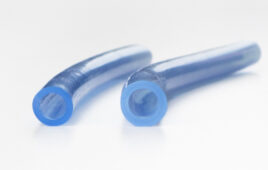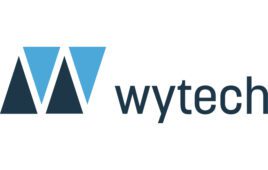Here’s an inside look at one organization’s decision to bring medical device manufacturing back onshore.
John Thomas, Bonifacio Consulting Services
Deciding where and how to manufacture a product is without a doubt one of the most important decisions a medical device OEM faces. This decision has many implications, from the overall successful manufacture of the product to the impact on the bottom line of the organization. To complicate matters, there are so many factors to be contemplated to ensure that a good manufacturing partner is selected, and once that manufacturing line is set, changing suppliers can be both challenging and expensive. One of the most common questions in any OEM’s mind is whether or not manufacturing on-shore or off-shore makes the most sense.
Vascular Pathways was a medical technology company focused on developing and commercializing novel vascular access devices via proprietary integrated nitinol guidewire technology. The company was growing and expanding their product line, but this presented problems in manufacturing. Their existing contract manufacturer (CM) in Tijuana wasn’t meeting production numbers with the current product line, and the company was cueing up the launch of their next generation product. At this critical point for the organization, Vascular Pathways was faced with the difficult decision of changing CM’s and also whether or not to bring manufacturing back to the U.S.
Is bringing manufacturing back to the U.S. worth it?
Bonifacio Consulting Services (BCS) was tasked with helping Vascular Pathways solve their manufacturing problems. In the case of Vascular Pathways, it became clear that bringing manufacturing back to the U.S. would provide benefits that far outweighed any benefit to manufacturing off-shore. BCS worked with Vascular Pathways to move manufacturing from Tijuana to a California-based contract manufacturer. The assignment lasted approximately six months with BCS providing engineering and project management, supporting the transfer of the existing production and the launch and scale up of the next generation product line.
The success of this project enabled Vascular Pathways to become an attractive target for a large medical device OEM— Bard — which subsequently acquired the business in 2015.
Key efforts included:
- Transfer of the existing product line from the Tijuana CM to the California CM including manufacturing and testing equipment (tipping, dispensing), inspection and assembly fixtures, procedures, etc.
- Transfer of existing injection molds from the short run design shop, bridge tooling for the next gen, and new tooling for the scale up.
- Reviewed drawings and specifications and helped improve supplier communication.
- Managed the supply chain of sourced components, coordinating suppliers, managing inventory, making sure orders were placed.
- Helped implement the sourcing of non-molded components and supplies in the new CM’s ERP system.
- Advised and assisted in the validations of equipment, processes and testing.
- Mentored young engineers to avoid costly “rookie mistakes.”
Lessons learned in transferring manufacturing back on-shore
Lesson 1: Size-match your contract manufacturer to provide the best support and service
It became clear that Vascular Pathways (a relatively small OEM) was not getting the same support from their Tijuana CM that the larger OEM’s were receiving. The CM’s larger, multinational OEM customers demanded priority, and they had little choice but to make those larger customers a priority in order to be successful.
Takeaways:
- Know your suppliers. Understand who the CM does business with and who their other customers are. Are they like you or do they have significant leverage advantage?
- Right-size the OEM with CM. It benefits both sides to have a complimentary size in business. If the OEM is a very small part of the CM’s business, the CM will often need to direct resources to larger, more profitable customers leaving the small OEM without support.
- Resources – OEM’s (both large and small) have limited resources and need to rely on the CM for support on problem-solving, meeting growth demands, quality, continuous improvement, etc.
- Bargaining power with suppliers – are you going to get the service and support you need?
BCS searched for a better fit and identified several sources who could not only take on the existing product but also execute on the next-gen product launch. Ultimately, with the guidance of BCS, Vascular Pathways selected a more “right-sized” contract manufacturer in California.
Lesson 2: Focus on core competencies and mitigate other risks
Vascular Pathways’ new California CM had its strengths and weaknesses. However, the weaknesses were addressable compared to what the organization had previously faced with the CM’s cooperation and the guidance from BCS. Furthermore, the California CM had very strong expertise in injection molding (the majority of Vascular Pathways components are molded), giving them complete control of that part of the supply chain.
Takeaways:
• Don’t forget about raw materials and component sourcing
• Proactively identify and manage risks
Lesson 3: Boots on the ground: Appoint an experienced technical project manager on-site
The contract manufacturer had a talented — but very young —engineering staff with limited experience. Furthermore, they did not have any experience manufacturing a complex, 25 component finished assembly involving adhesives, leak testing, needles, springs and managing the purchased components. Strategically, the CM saw this as a great opportunity to expand their capabilities, so the project was very high profile and had the full support of the organization.
To help mitigate these weaknesses and risks, Vascular Pathways chose to engage external resources from BCS to act as the organization’s on-site eyes, ears and hands and to engage on-going and successfully project manage the transition to the new CM.
Takeaways:
- “Boots on the ground” are critical. These types of projects are very difficult to do remotely or by “helicopter” Project Managers. When things need to move quickly you need to be there.
- Use expert resources early. Seasoned and experienced industry veterans can help avoid many problems early on the project.
- Appoint someone internally, or outsource to someone who can do the job and has deep industry expertise. The earlier you can get them involved in the process, the more likely things will go smoothly in the long run.
Conclusion
While Vascular Pathways ultimately found success, it’s easier to do things right the first time around. The timing ended up being perfect for this particular organization to make the change before the next-gen product line because all the validation requirements were already necessary. However, as a general rule, you should do your homework ahead of time – it is typically much more work to change suppliers down the road when production needs are not met.
Not all products or OEM’s are suited for off-shore or near shore. Be sure you have the right team members for success, and that you consider carefully the overall fit of competencies and service levels, and that you get references from like-sized organizations about their experience. If you consider these factors, it’s much more likely you’ll choose the right contract manufacturer the first time, and be well on your way to successful and profitable production.
As the managing director of the technical practice at Bonifacio Consulting Services, John Thomas works with medical device manufacturers and OEM’s to optimize their operations. Based out of Orange County, Calif., Thomas has over 25 years of experience in the medical device, optics, packaging, military and consumer products industries.






The Reshoring Initiative Can Help
In order to help companies decide objectively, the not-for-profit Reshoring Initiative’s free Total Cost of Ownership Estimator (TCOE) can help corporations calculate the real P&L impact of reshoring or offshoring. http://www.reshorenow.org/TCO_Estimator.cfm
For the first time in decades, more manufacturing jobs are returning to the U.S. than are going offshore. The combined reshoring and foreign direct investment (FDI) trends grew by more than 10% in 2016, adding 77,000 jobs and exceeding the rate of offshoring by about 27,000 jobs. In comparison, from 2000 to 2003 offshoring exceeded reshoring and FDI by about 220,000 jobs per year.
Reshoring and FDI surged in 2017. The rate of jobs coming from offshore is up 200+% since the same time last year.
Reshoring Initiative 2016 Data Report: The Tide Has Turned http://reshorenow.org/content/pdf/Reshoring_Initiative_2016_Data_Report.pdf